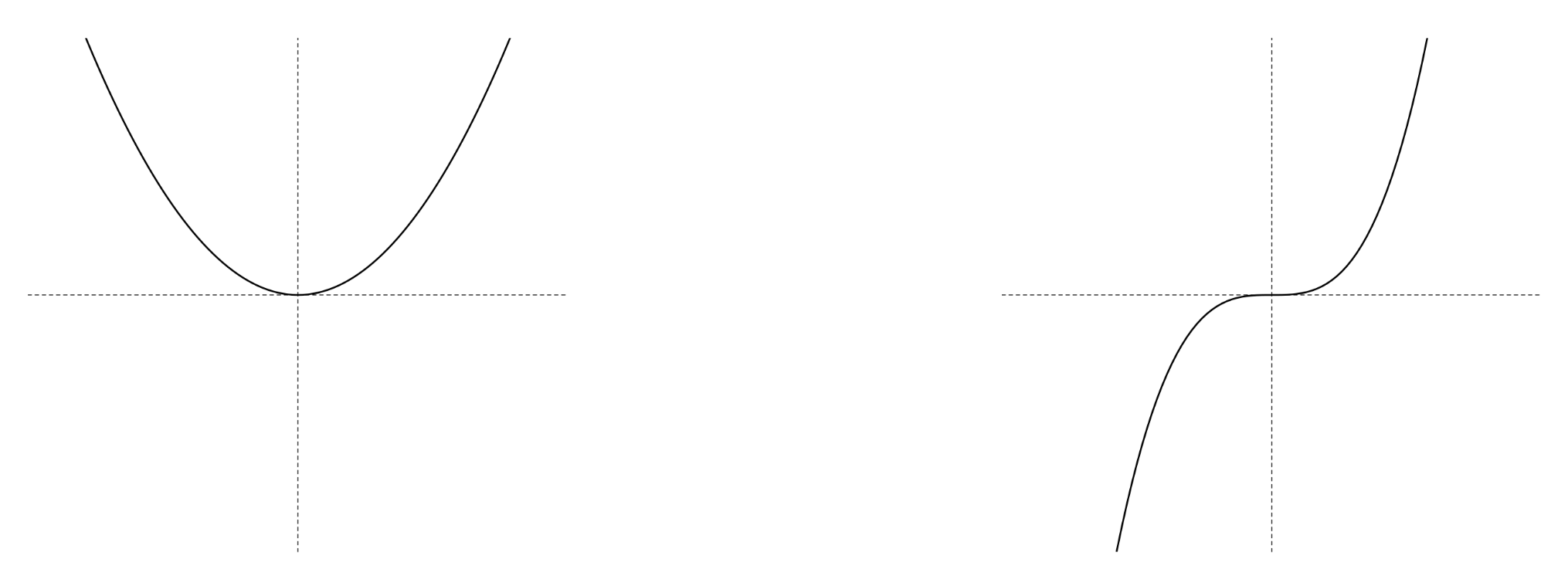Symmetry, Antisymmetry, and Chirality: Use and Misuse of Terminology
Abstract
:1. Introduction
2. Symmetry in Mathematics
- An object is a function having its input argument in a metric space A.We denote by f this function and by B the space of the values returned by f.
- An object f is symmetric if a non-identity isometry of A leaving the object invariant exists.The preserved distance function is denoted .
3. Antisymmetry
3.1. Symmetric and Antisymmetric Relations
3.2. Odd Functions and Antisymmetric Functions
3.2.1. Odd Functions
3.2.2. Antisymmetric Functions of Several Variables
- (1)
- For all , , and .
- (2)
- We consider any three elements of S, , , and . Then, we consider the three n-tuples of , , , and . The function D should be such that, for all , , and of , with , then , where is any permutation of .
3.3. Matrices and Tensors
4. Chirality
4.1. Direct and Indirect Isometries
- An isometry is direct when it can be written as a product of squared isometries.
- An isometry is indirect when it is not direct.
- An object is achiral when it is invariant to an indirect isometry.
- An object that is not achiral is chiral.
4.2. Symmetry of Odd Functions
4.3. Functions of Several Variables and Chirality
5. Inconsistency of the Left-Right Classification
6. Chirality in Physics
7. Concluding Remarks
Funding
Institutional Review Board Statement
Informed Consent Statement
Data Availability Statement
Conflicts of Interest
References
- Weyl, H. Symmetry; Princeton University Press: Princeton, NJ, USA, 1952. [Google Scholar]
- Petitjean, M. A definition of symmetry. Symmetry Cult. Sci. 2007, 18, 99–119. Available online: https://hal.archives-ouvertes.fr/hal-01552499 (accessed on 9 March 2021).
- Deza, M.; Deza, E. Encyclopedia of Distances; Springer: Berlin/Heidelberg, Germany, 2009; Section 1.1 p. 4; Section 1.5 p. 40; Section 4.1 p. 83. [Google Scholar] [CrossRef]
- Petitjean, M. About chirality in Minkowski spacetime. Symmetry 2019, 11, 1320. [Google Scholar] [CrossRef] [Green Version]
- Petitjean, M. Chirality in geometric algebra. Compt. Rend. Math. 2021, submitted. [Google Scholar]
- Lipschutz, S.; Lipson, M.L. Schaum’s Outline of Theory and Problems of Discrete Mathematics, 3rd ed.; McGraw-Hill: New York, NY, USA, 2007; p. 29. [Google Scholar]
- Vince, J. Mathematics for Computer Graphics, 5th ed.; Springer: London, UK, 2017; p. 338. [Google Scholar] [CrossRef] [Green Version]
- Bernig, A.; Foertsch, T.; Schroeder, V. Non standard metric products. Beitr. Alg. Geom. 2003, 44, 499–510. [Google Scholar]
- Thomson, W. The Molecular Tactics of a Crystal; Clarendon Press: Oxford, UK, 1894; Section 22; p. 27. [Google Scholar]
- Petitjean, M. Chirality in metric spaces. In memoriam Michel Deza. Optim. Lett. 2020, 14, 329–338. [Google Scholar] [CrossRef] [Green Version]
- Robinson, D.J.S. A Course in the Theory of Groups, 2nd ed.; Springer: New York, NY, USA, 1996; p. 36. [Google Scholar] [CrossRef]
- Beilinson, A.; Drinfeld, V. Chiral Algebras; AMS Colloquium Publications: Providence, RI, USA, 2004; Section 3. [Google Scholar]
- Gaitsgory, D. Notes on 2D conformal field theory and string theory. arXiv 1999, arXiv:math/9811061. [Google Scholar]
- Mezey, P.G. Rules on chiral and cchiral molecular transformations. J. Math. Chem. 1995, 17, 185–202. [Google Scholar] [CrossRef]
- Mezey, P.G. Rules on chiral and cchiral molecular transformations. II. J. Math. Chem. 1995, 18, 133–139. [Google Scholar] [CrossRef]
- Petitjean, M. Chirality and symmetry measures: A transdisciplinary review. Entropy 2003, 5, 271–312. [Google Scholar] [CrossRef]
- Schwichtenberg, J. Physics from Symmetry, 2nd ed.; Springer: Cham, Switzerland, 2018; Chapters 3.7, 6.3 and 7.4. [Google Scholar]
- Eddington, A.S. Fundamental Theory; Cambridge University Press: Cambridge, UK, 1946; p. 111. [Google Scholar]
- Petitjean, M. Chirality of Dirac spinors revisited. Symmetry 2020, 12, 616. [Google Scholar] [CrossRef]
- Cross, L.C.; Klyne, W. IUPAC rules for the nomenclature of organic chemistry. Section E—stereochemistry (Recommandations 1974). Pure Appl. Chem. 1976, 45, 11–30. [Google Scholar] [CrossRef]
- Flapan, E. A Topological Look at Molecular Chirality; Cambridge University Press: New York, NY, USA, 2012. [Google Scholar] [CrossRef]
- Petitjean, M. Chiral mixtures. J. Math. Phys. 2002, 43, 4147–4157. [Google Scholar] [CrossRef] [Green Version]
- Petitjean, M. Tables of quantiles of the distribution of the empirical chiral index in the case of the uniform law and in the case of the normal law. arXiv 2020, arXiv:2005.09960. [Google Scholar]
- Petitjean, M. Extreme asymmetry and chirality. A challenging quantification. Symmetry Cult. Sci. 2020, 31, 439–447. Available online: https://hal.archives-ouvertes.fr/hal-03033327 (accessed on 9 March 2021). [CrossRef]
- Đorić, D.; Nikolić-Đoric, E.; Jevremović, V.; Mališić, J. On measuring skewness and kurtosis. Qual. Quant. 2009, 43, 481–493. [Google Scholar] [CrossRef]


Publisher’s Note: MDPI stays neutral with regard to jurisdictional claims in published maps and institutional affiliations. |
© 2021 by the author. Licensee MDPI, Basel, Switzerland. This article is an open access article distributed under the terms and conditions of the Creative Commons Attribution (CC BY) license (https://creativecommons.org/licenses/by/4.0/).
Share and Cite
Petitjean, M. Symmetry, Antisymmetry, and Chirality: Use and Misuse of Terminology. Symmetry 2021, 13, 603. https://doi.org/10.3390/sym13040603
Petitjean M. Symmetry, Antisymmetry, and Chirality: Use and Misuse of Terminology. Symmetry. 2021; 13(4):603. https://doi.org/10.3390/sym13040603
Chicago/Turabian StylePetitjean, Michel. 2021. "Symmetry, Antisymmetry, and Chirality: Use and Misuse of Terminology" Symmetry 13, no. 4: 603. https://doi.org/10.3390/sym13040603





